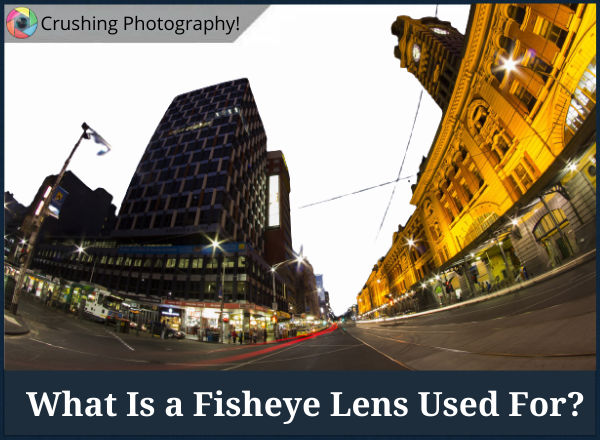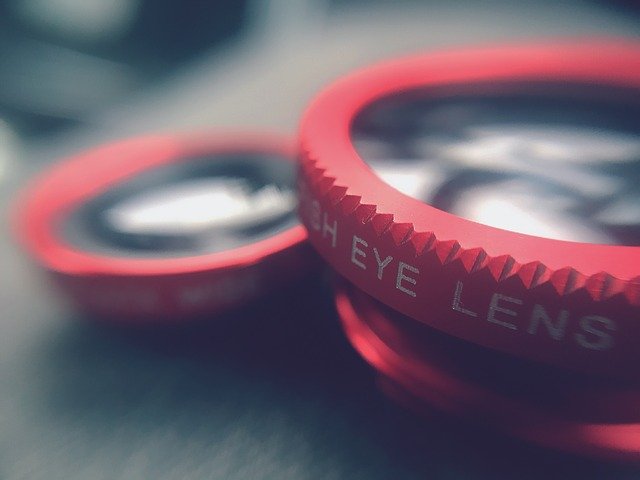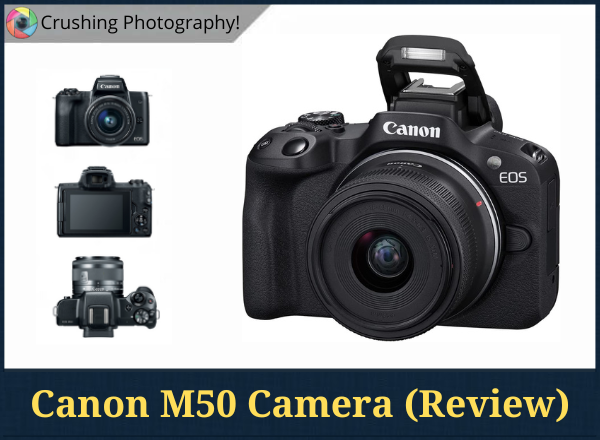
What is a fisheye lens used for?
This is a beginner’s guide on this ultra-wide glass in photography and film. Specifically, you’ll learn:
- what is a fisheye lens
- how does a fisheye lens work
- how to choose one for your purposes
And lots more.
So, if you’re interested in getting creative with this type of photography, then this post is for you.
Without further ado, let’s get started.
What Is a Fisheye Lens?
It is an ultra-wide-angle lens that has a viewing angle close to 180 degrees and therefore produces a distorted illusion in the photos.
(The way it operates is similar to the perspective of the fish eye, hence the name.)
Because of that feature, you will be able to get an extremely wide panoramic or hemispherical image. And this whole new perspective, the “fisheye effect” in the images is what attracts some photographers.
(Check out the video above, including some fisheye lens photos.)
==> Find yours for the best price.
However, not all fisheye lenses are created equal. Let’s talk about circular vs diagonal types.
Three Types of Fisheye Lenses
There are different types of these unique lenses. We’ll start with the most common one.
-
Circular Fisheye Lens
It’s unique in a sense that it doesn’t cover the entire area of the frame, but shows only an inscribed circle with black edges. In movies, they actually use those to create a peephole effect.
Here’s an example:

What is the purpose of fisheye lens effect like this?
They are used to create interesting panoramas or the effect of a 360-degree panorama.
They are usually used to capture unusual landscapes and cityscapes. It can also be used for particular sports photography such as skateboarding.
It also does an excellent job of capturing the firmament.
-
Diagonal (Full Frame) Fisheye Lens
The second type is a diagonal, also known as a full-frame fisheye lens.
Why diagonal?
Its 180-degree viewing angle is distributed horizontally on the frame, so it’s completely filled.
Unlike what we saw with the circular fisheye forming a circular image within the frame, a diagonal (full frame) fisheye lens fills the frame entirely.
This captures those photos you see that make the center portion appear more prominent than other objects in the picture as the horizontal and vertical sides are less than 180 degrees.
This type of glass is suitable for traditional landscape and interior photography.
-
More than 180 Degree Angle Lenses
While there are two main kinds of fisheye lenses on the market, there are also mechanisms that have an angle of view greater than 180 degrees.
These are extremely rare though.
And probably this is the reason why they are barely mentioned in any photography resources.
Have you ever wondered why NASA uses a fisheye lens?
The reason why NASA uses fisheye lenses is because of their ability to have a wide field of view and large depth of field, which is the very purpose of fisheye lens (so they are unlikely to miss anything in space).
What Does a Fisheye Lens Do?
Now that you already know the fisheye lens definition, it’s about time you learn what it does.
So, what are fisheye lenses used for?
Here are some of the reasons why adding this unique glass to your photography gear collection might make sense to you.
-
It gives you a fun image capture
Even though plenty of people may say that fisheye lenses tend to provide an ‘ugly distortion’, when focused and used correctly, they can actually give your photo a fun and creative perspective.
This all depends on the scene that you plan or want to shoot.
Using the lines and curves of the scene can help create an image with a different focus. The fisheye lens effect will give your shots a more dramatic and unique “feel”.
-
‘Big air’ effect for extreme sports photography
Using a fisheye lens for extreme sports such as snowboarding or skateboarding will make the capture look more creative.
This is because this glass tends to focus on the subject in the middle.
It gives a ‘big air’ effect on the scene that surrounds an object and allows you to fully capture and focus the view on the skateboarder’s moves and tricks.
In addition to sports, fisheye lenses are used in architecture photography, as well as for creating 3D panoramas of any objects.
Fun fact: To create the Google Earth service, the company used a fisheye ultra-wide angle lens. Doesn’t it make sense now why Google Earth looks like something from a fishbowl lens?
-
It is used to create a ‘peephole’ effect
In film, one of the most common ways to use this lens is when they need to create a scene of the character looking through a peephole.
It is a fisheye that makes it look real to life. Because if you try to film through the actual peephole, it would be next to impossible.
Now you know how they do that!
-
Fisheye lenses work well for underwater shots
Because they give a broader focus on its subject, an underwater photo will put the viewers’ focus on the subject and not the other elements of the ocean.
It will also capture a beautifully distorted image because there are fewer straight lines underwater.
-
Great for astrophotography too
Aside from the natural beauty of the night sky, using a fisheye lens will allow you to capture images of the sky with more stars.
It will give you a distorted effect that is both unique and artistic at the same time.
When Was the Fisheye Lens Invented?
Earlier I mentioned why it’s called the way it’s called.
But when was it invented?
Its history goes way back to 1906 when Robert Wood, a physicist and inventor, discovered that a fish would see from beneath the surface with a comprehensive, hemispherical view.
Wood did a lab test to show the point-eye view of a fish looking at the world underwater, using a bucket full of water, a pinhole camera, mirrored glass, and light.
But it wasn’t until 1935 that German inventors took Wood’s theory into action and shared this idea with the Japanese company, Nikon.
In 1957, they introduced the world to its first fisheye lens ever made, and many other companies followed through.
That was how the beauty of distorted photography became popular.
(Especially in the music industry.)
Today, you can still find fisheye lens for film camera in the market. You just need to know where to look.
How to Choose a Fisheye Lens?
Look:
Just like any other expensive photography gear, it is a serious investment and you should choose yours carefully.
You already know that there are two main types that you can choose from:
- the full frame fisheye lens, and,
- the circular fisheye lens.
And this is the first thing you need to think about before making a purchase. Read on to learn more about fisheye lens guidelines when buying your own gear.
Let’s recap: With a full-frame fisheye lens, you will get an image with a diagonal view, filling the entire frame; while with a circular one, you get a circle image with black edges.
Other two factors to consider are the lens flare and the quality of its center sharpness.
Since this type of glass gives you an ultra-broad view and a depth field, controlling the light that passes through will be difficult. This will also lead to poor sharpness in your shots.
You might want to choose the one that has more control over these two areas.
Last but not least:
Your budget plays a big part in making a buying decision.
If you are a beginner, I suggest you start off with a lower-end lens and experiment before upgrading to a high-end one.
This way, you will also learn whether you really want to invest in this glass for long-term use without overspending.
Best Places to Buy Them Online
We all know many of us shop for photography gear online. What’s the best place though?
I suggest you check the price and availability on:
- Amazon
- B&H Photo Video
- Adorama
Click here to compare the prices.
In my experience, most people shop on Amazon but I’m also sharing a couple more trustworthy platforms where a lot of photographers buy their equipment.
Fisheye Lens Photography
The truth is…
There are many camera lenses with optical tricks available in the market today.

While the fisheye glass is a way to introduce a fun and whole new perspective into your images you should realize that they have their own advantages and disadvantages.
In fact, a lot of people don’t know how to use fisheye lens to make the most out of their photos.
Well, admittedly, it isn’t that easy to use, and it is definitely a tool for professionals, but as the saying goes, “practice makes it perfect”.
The more you practice and experiment, the more and faster you’ll be able to master your new gear in the long run. And it’ll give you a whole new perspective on photography.
Now, I’d like to hear from YOU:
- What are your thoughts on fisheye lens uses for photography?
- Have you ever recognized the effects of a fisheye lens in movies?
- Do you like or dislike the distortion it produces?
Let us know in the comments below!



I’ve been curious about how fisheye lenses work and where they should be used. So it really fits for me because photography is one of my hobbies. I didn’t realize that there are two kinds of fisheye lenses: circular and diagonal. So, circular fisheye lenses used to create interesting panoramas, and to capture unusual landscapes and cityscapes, as well as sports photography like skateboarding. And the diagonal is for 180 degree viewing. Gotcha. What an informative and educational your content is. Now I learned that even NASA is also using fisheye lenses!
I found the study of Robert Wood in 1906 interesting and looked more into it. The idea of this type of lens really came from fish itself because it’s right that fish have the capacity to look around without moving its body and can see even from behind. Wood’s contribution was really helpful in inventing the fisheye lenses which seems to be widely used nowadays in the world. Although it took about 51 years before Wood’s theory become a reality with the help of the German inventor who started to discover it in 1935 but was able to introduce it to the world in 1957. Glad to have come across your post. I have learned a lot not only about photography but also about its invention. Thanks so much for sharing this to us and I hope you continue contributing informative content like this. Keep it up!
Hi Francisco, thank you for your support! I appreciate it.